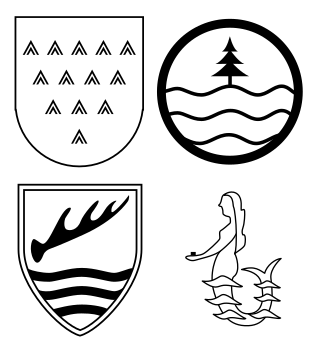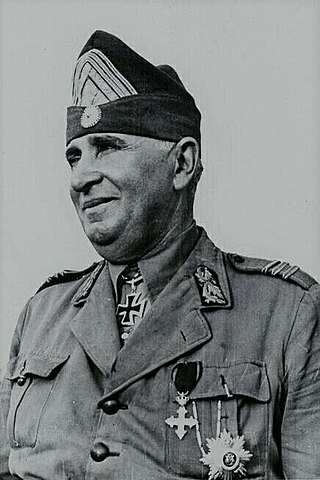Order of battle

Generaloberst Friedrich Paulus, commanding the 6th Army [1]
Chief of Staff: Generalmajor Arthur Schmidt [2]
German
-
 IV Army Corps – General der Pioniere Erwin Jaenecke, from 17 January General der Artillerie Max Pfeffer
IV Army Corps – General der Pioniere Erwin Jaenecke, from 17 January General der Artillerie Max Pfeffer -
 29th Motorized Infantry Division – Generalmajor Hans-Georg Leyser
29th Motorized Infantry Division – Generalmajor Hans-Georg Leyser -
 297th Infantry Division – General der Artillerie Max Pfeffer, from 16 January Generalmajor Moritz von Drebber
297th Infantry Division – General der Artillerie Max Pfeffer, from 16 January Generalmajor Moritz von Drebber -
 371st Infantry Division – Generalleutnant Richard Stempel (KIA)
371st Infantry Division – Generalleutnant Richard Stempel (KIA)
-
-
 VIII Army Corps – General der Artillerie Walter Heitz (promoted January 1943 to Generaloberst)
VIII Army Corps – General der Artillerie Walter Heitz (promoted January 1943 to Generaloberst) -
 76th Infantry Division – Generalleutnant Carl Rodenburg
76th Infantry Division – Generalleutnant Carl Rodenburg -
 113th Infantry Division – Generalleutnant Hans-Heinrich Sixt von Armin
113th Infantry Division – Generalleutnant Hans-Heinrich Sixt von Armin
-
-
 XI Army Corps – General der Infanterie Karl Strecker
XI Army Corps – General der Infanterie Karl Strecker -
 44th Infantry Division – Generalleutnant Heinrich-Anton Deboi
44th Infantry Division – Generalleutnant Heinrich-Anton Deboi -
 376th Infantry Division – Generalleutnant Alexander Edler von Daniels
376th Infantry Division – Generalleutnant Alexander Edler von Daniels -
 384th Infantry Division – Generalleutnant Eccard Freiherr von Gablenz, from 16 January Generalmajor Hans Dörr
384th Infantry Division – Generalleutnant Eccard Freiherr von Gablenz, from 16 January Generalmajor Hans Dörr
-
- XIV Panzer Corps – General der Panzertruppe Hans-Valentin Hube, from 17 January Generalleutnant Helmuth Schlömer
-
 3rd Motorized Infantry Division – Generalmajor Helmuth Schlömer, from 18 January Oberst Jobst Freiherr von Hanstein
3rd Motorized Infantry Division – Generalmajor Helmuth Schlömer, from 18 January Oberst Jobst Freiherr von Hanstein -
 60th Motorized Infantry Division – Generalmajor Hans-Adolf von Arenstorff
60th Motorized Infantry Division – Generalmajor Hans-Adolf von Arenstorff -
 16th Panzer Division – Generalleutnant Günther Angern
16th Panzer Division – Generalleutnant Günther Angern
-
- LI Army Corps – General der Artillerie Walther von Seydlitz-Kurzbach
-
 71st Infantry Division – Generalleutnant Alexander von Hartmann, from 25 January Generalmajor Fritz Roske
71st Infantry Division – Generalleutnant Alexander von Hartmann, from 25 January Generalmajor Fritz Roske -
 79th Infantry Division – Generalleutnant Richard Graf von Schwerin
79th Infantry Division – Generalleutnant Richard Graf von Schwerin -
 94th Infantry Division – Generalleutnant Georg Pfeiffer
94th Infantry Division – Generalleutnant Georg Pfeiffer -
 100th Jäger Division – Generalleutnant Werner Sanne
100th Jäger Division – Generalleutnant Werner Sanne -
 295th Infantry Division – Generalmajor Otto Korfes
295th Infantry Division – Generalmajor Otto Korfes -
 305th Infantry Division – Generalleutnant Bernhard Steinmetz
305th Infantry Division – Generalleutnant Bernhard Steinmetz -
 389th Infantry Division – Generalmajor Erich Magnus, from 19 January Generalmajor Martin Lattmann
389th Infantry Division – Generalmajor Erich Magnus, from 19 January Generalmajor Martin Lattmann -
 14th Panzer Division – Generalmajor Martin Lattmann
14th Panzer Division – Generalmajor Martin Lattmann -
 24th Panzer Division – Generalleutnant Arno von Lenski
24th Panzer Division – Generalleutnant Arno von Lenski
-
-
 Luftwaffe
Luftwaffe - 9th Flak Division – Generalmajor Wolfgang Pickert
-
 Jagdgeschwader 3 – Wolf-Dietrich Wilcke
Jagdgeschwader 3 – Wolf-Dietrich Wilcke
- XXXXVIII Panzer Corps – General der Panzertruppe Rudolf Veiel until November 1942, followed by many other commanders
-
 IV Army Corps - General der Infanterie Viktor von Schwedler
IV Army Corps - General der Infanterie Viktor von Schwedler - Romanian 6th Corps - Lieutenant General Corneliu Dragalina, transferred to the Romanian 4th Army
Romanian
Army Group Antonescu
- Third Army – General Petre Dumitrescu
- 1st Corps – Lieutenant General Teodor Ionescu
- 7th Infantry Division – Brigadier General Constantin Trestioreanu
- 11th Infantry Division – Brigadier General Savu Nedelea (POW)
- 2nd Corps – Lieutenant General Nicolae Dăscălescu
- 9th Infantry Division – Major General Constantin Panaitiu
- 14th Infantry Division – Major General Gheorghe Stavrescu
- 7th Cavalry Division – Colonel Gheorghe Munteanu
- 4th Corps – Lieutenant General Constantin Sănătescu
- 1st Cavalry Division – Colonel Constantin Brătescu [4]
- 13th Infantry Division – Major General Gheorghe Ionescu
- 15th Infantry Division – Brigadier General Ioan Sion (KIA)
- 5th Corps – Lieutenant General Aurelian Son
- 5th Infantry Division – Major General Nicolae Mazarini (POW)
- 6th Infantry Division – Major General Mihail Lascăr (POW)
- In reserve
- 1st Armoured Division – Major General Gheorghe Radu
- Various artillery regiments
- 1st Corps – Lieutenant General Teodor Ionescu
- Fourth Army – Lieutenant General Constantin Constantinescu-Claps
- 6th Corps – Lieutenant General Corneliu Dragalina
- 1st Infantry Division – Brigadier General Ioan Mihăescu
- 2nd Infantry Division – Brigadier General Dumitru Tudose
- 18th Infantry Division – Brigadier General Radu Băldescu
- 20th Infantry Division – Major General Nicolae Tătăranu until 19 January 1943, then Brigadier General Romulus Dimitriu (POW)
- 7th Corps – Lieutenant General Florea Mitrănescu
- 4th Infantry Division – Brigadier General Barbu Alinescu
- 5th Cavalry Division – Colonel Dumitru Popescu
- 8th Cavalry Division – Colonel Radu Korne [4]
- 6th Corps – Lieutenant General Corneliu Dragalina













